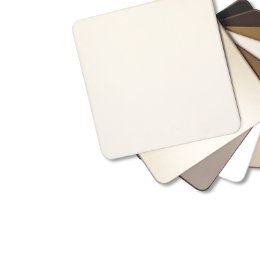Ask 10 architects if they’ve ever specified this cladding material and it’s a safe bet most will answer “no,” and this in spite of the fact it covers tens of thousands of U.S. buildings and its environmental benefits may be without equal in its category.
Welcome to the remarkable world of metal composite materials (MCM). Today, MCM sheets beautify and shield leading commercial, medical, hospitality, and academic structures worldwide, from the iconic Burj Al Arab to tens of thousands of U.S. structures across all property types.
If you’ve specified MCM, you know all about its often overlooked aesthetic, durability, and environmental characteristics. If you haven’t, you and your practice may be in for a pleasant surprise:
1. Immense Design Flexibility. Thinking hyper-vivid coloration? A stone look? Timber? Mica? How about show-stopping prismatic effects? Natural? Anodized? Or a brushed-metal effect? MCM coil coating with a fluoropolymer resin offers colors and gloss that span a spectrum of possibilities, including precise color matching to AAMA 2605-13 standards. A leading MCM manufacturer, ALPOLIC, sent out nearly 220,000 color samples last year. “We’re asked to come up with four or five new colors each week,” says Jim Moses, ALPOLIC technical services manager.
2. Color Warranted Up to 30 Years. MCM fluoropolymer finishes are highly waterproof, weatherproof, corrosion-resistant, and UV resistant. So much so, leading MCM manufacturers offer warranties of up to 30 years.
3. Stable, Predictable Performance. MCM sheets are manufactured in a process using two thin skins of prefinished metal, usually aluminum. Copper, zinc, stainless steel, and titanium are also available. The metal skins are continuously bonded under pressure and heat to an extruded thermoplastic or mineral core. No glues. No adhesives. Cutting, grooving, punching, drilling, bending, rolling, and many other specialized processes are possible without the limitations of traditional architectural metals. Thickness varies from 2 to 6 millimeters.
4. Code Compliant. MCM meets all code requirements. For example, the MCM manufacturer ALPOLIC vets their products with a variety of respected independent agencies such as the ICC-ES, UL, Warnock Hersey, as well as Miami Dade county, New York City, and other jurisdictions.
5. Environmentally Friendly. MCM is arguably the greenest cladding material available: The aluminum skins and core are nearly 100 percent recyclable. Numerous environmental product declarations, product transparency declarations, and LEED contribution data sheets support the product’s green standing. “There’s a very good chance the MCM you order were once beverage cans,” says Moses.
6. Affordable Distinction. “You won’t meet a more price-conscious market than the retail market,” observes Moses. Yet, as Moses explains, MCM panels and canopies are routinely specified for auto dealerships, hotels, restaurants, and retail stores because of their long-lasting color retention, clean, crisp look, and overall value.
7. Design Support. Architects and specifiers interested in learning more about MCM should contact a metal fabricator. MCM manufacturer ALPOLIC offers several ways to learn more, including AIA-certified lunch & learn courses, samples, literature, quote request, and the names of local fabricators.
Isn’t it time you added MCM panel to your shortlist of cladding options?







